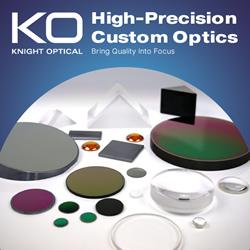Response to New York Times article - As Robotics Advances, Worries of Killer Robots Rise - by John Markoff and Claire Cain Miller
RIA Responds to New York Times article - As Robotics Advances, Worries of Killer Robots Rise - by John Markoff and Claire Cain Miller
The Robotic Industries Association (RIA) read with great interest the aforementioned article written by Mr. Markoff and Ms. Miller and takes exception to several of the points and conclusions made in the article.
RIA first published its industrial robot safety standard in 1986, in response to increasing acceptance of robotic technologies in industrial applications, and has been an active advocate in promoting industrial robot safety ever since. While even one accidental death is one too many, the robotics industry has been very successful in implementing standards and practices designed to safely deploy robots in factories and businesses throughout the world. Because of excellent global standards, there are more than 1.5 million robots now safely operating in factories worldwide.
With regard to "cage free" robots, RIA is currently leading international standards development efforts on the safe deployment on collaborative robot operations. The standards identify strict conditions and criteria that must be met in order for such robots to work without external safeguards, such as fences or light curtains. If the criteria cannot be met, the fallback position is to install the appropriate safeguarding as a means to reduce risk.
The development of the new collaborative robots and standards does not impact the safeguarding requirements of the thousands of industrial robots that are currently deployed in factories. Rather than being "dumb robots," as the article suggests, these machines use sophisticated circuitry and motors to ensure extreme precision and quality, thereby reducing the need for maintenance, troubleshooting, or other human interventions that were the cause of many of the incidents reported in the article. Furthermore, advances in safety sensors serve to expand the applications and abilities of robots while also helping to mitigate dangerous situations before accidents occur. Additionally, robots and industrial automation help increase workplace safety by doing important tasks in environments that are dangerous for people.
Every piece of equipment or technology has the risk of causing harm under certain circumstances. The robotics industry has a great history of working proactively to address robot risks and will continue to do so in the future.
Featured Product

Knight Optical - Unlocking Precision for the Robotics and Automation Revolution
In the era of Industry 4.0, automation and machine learning drive the future. Knight Optical stands at the forefront, collaborating globally to supply precision optical components that power the robotics and automation sector. From UAVs, drones, and robotics to machine vision, LiDAR-driven car sensors, and renewable energy, our optics empower innovation. Optical components play an important role within the industry, including: Optical windows and domes safeguard systems in unmanned vehicles while preserving the field of view for cameras. Infrared lenses with aspheric surfaces elevate thermal imaging. Optical filters excel in machine vision, with colour glass, interference, and dichroic filters in our stock. Knight Optical provides stock components and custom solutions made to your exact specs. With every component undergoing rigorous metrology and QA checks before shipment, you are sure to experience true precision, innovation, and assurance.
